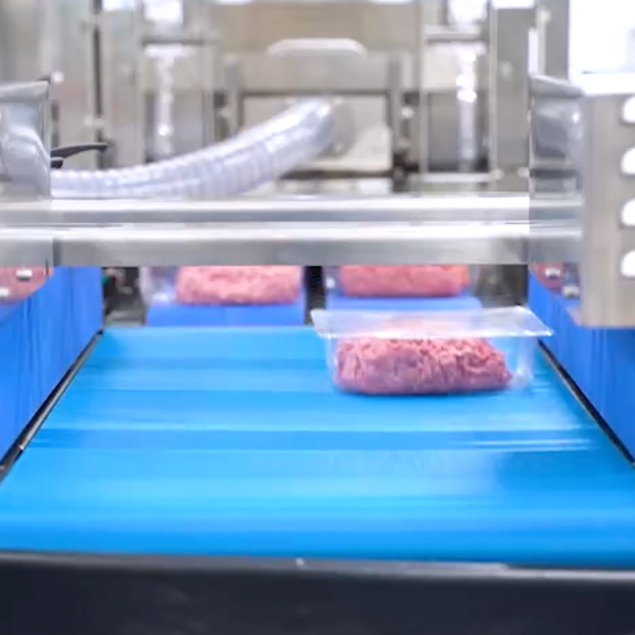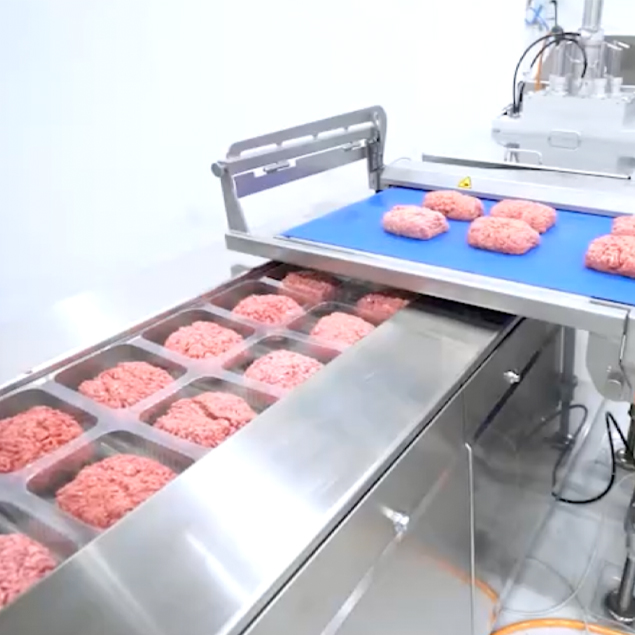
| Enhance your industry IQ Sign up for our free newsletters to stay informed on each day’s news and trends |
Subscribe |


Tight prep times and tighter budgets are causing seismic purchasing shifts among carnivorous consumers. The recent “Power of Meat” study from The North American Meat Institute (NAMI), Washington D.C., revealed that nearly eight out of 10 (78%) of shoppers are adjusting how much meat and poultry they buy, citing higher costs, lasting inflation, and lack of time as driving factors.
As economic pressures drive dramatic changes in the meat market, innovative case-ready packaging for premium ground meats – including beef, bison, venison, wagyu, and more – is emerging as a key player. The fundamental shift towards formats like thermoformed brick packaging is prompting both producers and consumers to re-evaluate their product and packaging choices, opting for options that prioritize maximum savings, minimized material waste, and optimal product quality and freshness.
"Consumers and retailers alike are waking up to trends like case-ready vacuum and brick packs for meat because there are real savings in terms of cost, time, and materials," said Jay Siers, Case-Ready Specialist for Harpak-ULMA Packaging in Taunton, MA. "It's a smart package, plain and simple. It's safely freezable. It's easy to open and protects product from outside atmosphere better than almost any other format.
Meat Bricks - Thermoforming.mp4 from Harpak-ULMA on Vimeo.
Preservation & Price Reduction by the Numbers
Consumer priorities have shifted, with value and quality taking center stage. This is reflected in a significant increase in the number of shoppers seeking protein sources and meal solutions that enhance their culinary experience (up from 37% in 2016 to 73% in 2023) and extend the timeframe between grocery runs, according to NAMI’s report.
The data also reveals two additional, distinct trends: 38% of shoppers are opting for larger pack sizes, like those found in perforated saddle packs at club and warehouse stores, to maximize value. Conversely, 34% are downsizing to smaller packages to maintain budget control.
Unsurprisingly, both consumer segments, value-seekers and budget-conscious shoppers, are employing freezing strategies to extend the usability of their meat purchases. A significant portion (66%) report dividing their meat into smaller quantities for freezing, while a distinct segment (24%) prioritizes freezer-ready packaging when making purchasing decisions.
Viewed through the lens of conservation, thermoformed brick packaging is the ideal choice over traditional ground meat packaging options such as stretch overwrap with permeable trays or even more preservative packaging options such as master bag systems. The key to case-ready brick packaging's popularity and success lies in its ability to combat a critical factor for long-term meat storage and cost savings: freezer burn.
However, even when gas flushed, that high-oxygen environment sets the clock ticking towards spoilage and lets moisture caught in the free head space inside the packaging crystalize quickly. The process causes freezer burn and subsequent product waste in as few as four days, forcing consumers back to the grocery store for potentially costly repurchases, considering the ongoing rise in meat prices (up 9.3% year-over-year).
"Brick packs are becoming so popular as an alternative among cost-conscious consumers because there is no free air in that package to freeze," said Siers. "The vacuum package has a residual oxygen level of approximately .5%, so your shelf life almost automatically extends up to 21 days minimum and 28 days maximum."
 Source: Harpak-ULMA Packaging, Jon Messier, Photographer
Source: Harpak-ULMA Packaging, Jon Messier, Photographer Steady for Case-Ready
The trend towards case-ready brick packaging is gaining further traction, fueled by consumers' growing preference for pre-packaged options for everyday meat purchases. Cost pressures throughout the market supply chain have led to the decline of in-house butchers, leaving consumers to rely on case-ready options that offer desirable advantages: enhanced shelf life, consistent premium quality, and the flexibility of cost-effective thermal conditioning (freezing and thawing) that meets consumer needs.
From this reliance, consumer perception of case-ready meat has also undergone a significant shift, according to the study. In 2008, only 9% of meat shoppers believed case-ready options were as good as or better than on-site cuts. Today, that number has skyrocketed to over 86%. This positive perception translates to buying habits, with more than 75% of all meat purchases now originating from the self-service case featuring pre-packaged options.
Under closer scrutiny, these shifts seem inevitable. Vacuum sealed thermoformed brick packaging offers a compelling combination of consumer benefits. Perforated saddle packs of brick-packed meat enable convenient portion control, while the puncture-resistant material safeguards product integrity, nutrition, and flavor. Additionally, this format allows for eye-catching branding, seamlessly aligning with the growing appeal of case-ready packaging and paving the way for future innovations in the category.
"With a case-ready vacuum package, steak or ground beef, single or saddlepack, when you have perforations, you tear off what you need, throw the rest in the freezer, and forget about it for up to 6 months," said Siers. "It stores easily in the freezer with no air, unlike an overwrapped tray, and the possibilities for different cuts and packaging protein types are limitless."
 Source: Harpak-ULMA Packaging, Jon Messier, Photographer
Source: Harpak-ULMA Packaging, Jon Messier, Photographer
Building A Better Future for Meat, Brick by Brick
Brick packaging, now almost synonymous with ground meat, is set to undergo still another significant transformation. This innovative approach is extending its reach beyond familiar territory, encompassing a wider variety of cuts and protein options. This advancement caters to the evolving needs of today's cost-conscious consumer, offering a confluence of benefits: convenience, affordability, and extended shelf life.
Producers capitalizing on this trend must leverage the well-established advantages of case-ready packaging, which is currently experiencing record consumer favorability and maximize these benefits while simultaneously implementing strategies to educate, engage, and personalize consumer experiences.
The evolution of brick packaging represents a multifaceted approach to achieving these goals. By extending its application to diverse meat cuts and prioritizing consumer needs, brick packaging is fostering convenience, reduces waste, and contributes to a more sustainable food system.
| Enhance your industry IQ Sign up for our free newsletters to stay informed on each day’s news and trends |
Subscribe |